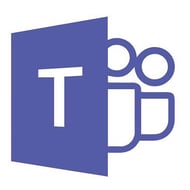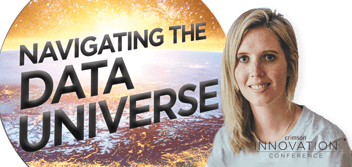7 Business Tech Take-Aways From My Time at Microsoft eXtreme365
I write to you from my hotel room on the outskirts of Amsterdam, directly under Schipol Airport’s flight path, at a hotel whose name and interior design is inspired by fossils.
Over a three day marathon of keynote talks and workshops, I am here to learn about the latest and greatest from Microsoft, at an event called extreme365. I admit that it’s not hard to feel a little crusty and fossil-like as I wince at yet another ‘super exciting’ exclamation from a Microsoft speaker.
Yet among the eXtreme365 enthusiasm, there is a momentum well underway in the Microsoft world that is undeniable. Microsoft has always banged the drum about the power and value it can deliver through its integrated platform; now that the majority of its customers’ business applications live in the cloud, a more intelligent way to manage data across the business is fast becoming a practical reality.
Free from the effects of the Microsoft Kool-Aid, under the thunder of another passing 747, here are my reflections on what the latest news I’ve heard means for your organisation.
#1 The best data lake will win the race
As we will be exploring at this year’s Crimson Innovation Conference, gathering more data points inside and outside of your business will catapult the success of your organisation in the years to come. Datafication – that is the capture, classification and organisation of data – is the underlying engine powering digital transformation.
Most organisations still suffer from a hodgepodge of systems that struggle to speak to one another fluently, let alone efficiently capture data. Such friction is costly, both in terms of lost opportunity and the time and cost needed to tie data silos together.
Microsoft has talked a lot about digital feedback loops these last few days. AI-enabled applications are thirsty for data to make more intelligent decisions and predictions. In turn, automation generates more activity and subsequently more data. We can expect to see the growth of such digital feedback loops as organisations get to grips with the technology. A small example hinted at in future roadmaps is how LinkedIn activity might be optimised and automated through AI-enabled Dynamics 365 for Sales.

In short, the digital dots are joining together. Those who can sort and organise such data points the best are going to build an incredibly valuable asset within their organisation, potentially a Unique Data Proposition (UDP).
#2 You can choose to go fast or go further together
A presentation on Microsoft Dynamics 365 for Marketing highlighted a curious dilemma that many clients ponder: do you choose best-of-breed applications or the best integrated?
Microsoft admits they are late to the world of marketing automation and they still have much work to do in my view. Compared to some popular alternatives the solution appears sparse. However, the opportunities to connect and surface data across the Microsoft platform invite some compelling arguments for why it’s worth making a short-term sacrifice by climbing aboard the Microsoft train.
I foresee many IT teams struggling to convince marketing teams that Microsoft is the right choice for their needs. However, if IT does a good job of painting the vision, by choosing Microsoft the marketing team could eventually inherit a potent customer engagement engine that reaches across the customer lifecycle, leveraging AI.
#3 The traditional buyer will be extinct within five years
We know that the way people buy products has been changing for some time, with many business buyers not engaging with sellers until they are 70 to 80 per cent along the process. Accelerating this shift are the millennial generation. Millennials will make up 75 per cent of the workforce by 2025 and have very different attitudes to how they buy and communicate, both as consumers and in the workplace. All this means that the days of the traditional buyer are coming to an end, meaning the traditional seller needs to catch up – fast.
Self-service portals, chat and messenger platforms are stepping forth, with social selling becoming an essential skill set for salespeople. Microsoft is in a great position to take advantage of this trend with their acquisition of LinkedIn and their growing chat technologies that are extremely easy to configure. For example, we saw how decision trees could be easily configured within Microsoft Dynamics 365 and expanded on as users configure ever more sophisticated chatbots.

#4 The final mile of productivity can be covered using the Power Platform
Power BI, Power Apps and Flow make up what Microsoft describe as the Power Platform.
Designed to reach the corners of productivity Microsoft Dynamics 365 cannot, there has been a tremendous amount of buzz about the direction Microsoft’s Power Platform is taking with some incredibly user-friendly tools that enable configurators (not developers) to build some handy apps that fill in little productivity gaps.

For me, the Power Platform is where the rubber meets the road in terms of real-world digitisation because it is about making it easier to capture and exchange data inside and out of an organisation in very user-friendly ways, that don’t take months or weeks to get published.
#5 A digital future is built around smarter team collaboration
The possibilities to reimagine how we change things for the better is only limited by our collective imaginations.
In Crimson’s recruitment services business we talk about the future skills and mindsets industry needs from its workforce to innovate in a world moving towards greater automation and commodification. What I’ve seen over the last three days only underscores the challenge and opportunity ahead.
We need to bring to together the clarity and logic of technologists, the flair of entrepreneurs and daring creativity of artistic minds to envision and make real new futures and new possibilities.
 Microsoft Teams is fast becoming the hub around which diverse teams can collaborate more effectively. We all recognise the limitation of email, and we all know how clogged our inboxes have become. Microsoft Teams is already incorporating video chat, and now we see how it can surface information from Microsoft Dynamics 365 in new and powerful ways. If you’re not using Microsoft Teams yet, it’s worth getting started.
Microsoft Teams is fast becoming the hub around which diverse teams can collaborate more effectively. We all recognise the limitation of email, and we all know how clogged our inboxes have become. Microsoft Teams is already incorporating video chat, and now we see how it can surface information from Microsoft Dynamics 365 in new and powerful ways. If you’re not using Microsoft Teams yet, it’s worth getting started.
#6 Mixed reality is here… sort of
On the last day of the conference, we had the chance to try HoloLens, Microsoft’s augmented reality technology. Analysts predict significant growth in this field, so I was keen to see what progress the Microsoft techies have made with HoloLens 2.

Microsoft presented some use cases; remote technical assistance appeared to resonate most with customers. Having an expert in the office interact with what someone is viewing ‘in the field’ presented some interesting ways to interact with the environment around them.
Despite the progress, including a more comfortable headset and higher resolution picture, the Crimson team felt that the interface still failed to deliver a smooth enough user experience. Even holding the HoloLens upside down can throw it into confusion.
However, one particularly interesting area was the HoloLens app for smartphones. This, we think, has some practical advantages, but we need some more time to dig into the detail before we can confidently recommend its use.
#7 You can no longer do this technology thing alone
The Microsoft tech landscape is now too big now for anyone to wrap their arms around. Microsoft no longer talks about CRM or ERP systems because there is so much more going on to reach all areas of organisational finance, operations and customer engagement.
While many of the tools are becoming simpler to configure (low code/no code is the mantra today), their scope and interoperability make potential process and task workflows incredibly powerful, and therefore complicated to map out.
Microsoft commits to two releases a year (importantly these are now April and October, not just vague seasons) and ongoing updates (not upgrades). They want everyone to be on the current version, meaning that any business committing to Microsoft is also committing to keeping pace with Microsoft’s rapid R&D cycle.
Crimson’s Solutions team lives and breathes this technology, yet even we struggle to keep up with the juggernaut. All of this means that clients can’t realistically expect to discern the pace, nuance and volume of change being generated by Microsoft’s cloud platform on their own while at the same time staying focused on their business.
Good Microsoft Partners will engage in ongoing dialogue with their clients about new opportunities to extend the Microsoft platform to add even greater value. Great Partners will empower their clients, highlight and facilitate regular change.
The good news for customers is that Microsoft Partners will increasingly be compensated based on their customers’ successful, ongoing consumption of Microsoft services. I believe this is a positive move from Microsoft and a commitment to empowering people and businesses to do more.
A new era for Microsoft is upon us, and it’s well positioned to support the journey we’re all on as we digitally transform our organisations and avoid the fate of the fossils featured in my hotel’s lobby.
Do you want to learn more about the intelligent tools that can improve your approach to cost-efficient customer service? Sign up for the Microsoft Art of the Possible Workshop.


